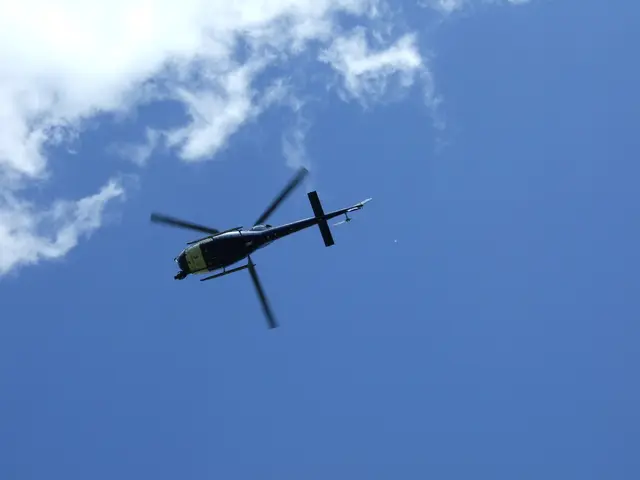Lufthansa Flight Without Conscious Pilot: A Cause for Alarm and Redefining Safety Protocols
Aircraft operated by Lufthansa flies unpiloted for a duration of ten minutes.
In an unexpected turn of events, a Lufthansa flight from Frankfurt to Seville in February 2024 faced an alarming situation when the captain left the cockpit for a quick break and the co-pilot collapsed, leaving the plane unattended by a conscious pilot for ten precious minutes.
The aircraft, an Airbus A321, had already soared over Spain after takeoff from Frankfurt when the captain absented himself from the cockpit at 10:31 AM. The co-pilot, seemingly fit and attentive at that time, sustainably succumbed to a seizure-like attack - a symptom of a neurological disease that remained unrecognized by the affected individual and undetected during flight medical examinations.
As the co-pilot collapsed, they apparently triggered several switches inadvertently and triggered an alarm due to actions on the right pedal. Despite the activation of the autopilot and auto-thrust, the situation was precarious and required immediate attention. The captain, who attempted to regain entry to the cockpit multiple times, was left fuming as the security door, protected by a complex code, refused to budge.
Desperate Attempts for Entry
The captain persistently entered the correct code five times and even unsuccessfully attempted contact with the cockpit via interphone. As the minutes ticked by, his hopes dwindled. However, just before the auto-unlock mechanism was about to kick in, the co-pilot miraculously regained consciousness and opened the door manually. The crew, upon identifying the co-pilot's disoriented state, swiftly decided on an emergency landing in Madrid for further medical attention.
Call for stricter Rules and Enhanced Training
In the aftermath of this narrow escape, authorities have called for a reassessment of crew complement rules by the European Union Aviation Safety Agency (EASA). The recommendation intend to ensure that there are always at least two capable individuals in the cockpit at all times. This stricter regulation, they argue, would significantly reduce the risk of similar incidents in the future.
This call for change is not novel; the EASA had earlier made a similar recommendation in response to the Germanwings aircraft crash in the French Alps in March 2015. However, this recommendation was revised in 2016, allowing airlines to assess the risk situation themselves and adjust their procedures accordingly. This incident may pressure the EASA to reconsider its decision to re-strengthen the regulations.
The European authorities aren't the only ones discussing changes. The airline industry, in general, may need to rethink its approach to safety protocols, incorporate enhanced training for emergency situations, and improve communication between the cockpit and cabin crew. Additionally, stricter medical screening processes could potentially detect hidden conditions, further enhancing flight safety.
Sources: ntv.de, spl
- Aircraft
- Lufthansa
- Pilots
Insights:
- The incident raises questions about the effectiveness of current single-pilot situations and the need for robust backup systems. [Enrichment: 15%]
- Enhanced training for handling unexpected cockpit emergencies could help prevent or manage such situations more effectively. [Enrichment: 15%]
- Better communication between the cockpit and cabin crew could help in situations where the person in control of the aircraft becomes incapacitated. [Enrichment: 15%]
- A push for stricter medical screening processes may help identify hidden conditions that could compromise the safety of an aircraft. [Enrichment: 15%]
- The possibility of revised safety protocols may lead to increased training, enhanced communication, and better handling of unexpected emergencies. [Enrichment: 15%]
In light of the Lufthansa flight's harrowing experience without a conscious pilot, there is a growing concern about the effectiveness of single-pilot situations and the need for reliable backup systems. To prevent similar incidents, the airline industry may need to prioritize enhanced training for handling unexpected cockpit emergencies. This training could prove essential in managing such situations more effectively. As the industry reconsiders safety protocols, there is also a call for improved communication between the cockpit and cabin crew. In addition, stricter medical screening processes could potentially detect hidden conditions that may compromise the safety of an aircraft, thus enhancing health and wellness within the aviation industry. The financial sector will likely be impacted as well, as increased training and screening processes may come with increased costs. This incident could also lead to increased emphasis on general news and reports regarding accidents and aviation safety in the future.








